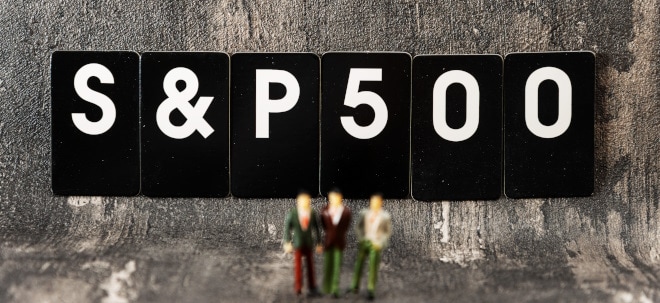| Rodinia Lithium Inc. Defines 4,959,000 Tonne Lithium Carbonate Equivalent Resource At Salar de Diablillos
March 2, 2011
- DIABLILLOS INFERRED MINERAL RESOURCE: 4,959,000 TONNES OF LITHIUM CARBONATE EQUIVALENT AND 19,837,000 TONNES OF POTASSIUM CHLORIDE EQUIVALENT
- 4,959,000 TONNES LITHIUM CARBONATE EQUIVALENT IS BELIEVED TO BE THE SECOND LARGEST LITHIUM BRINE RESOURCE TO DATE PREPARED UNDER NI 43-101 STANDARDS
- PROJECT MAINTAINS ITS FAVOURABLE GEOCHEMISTRY WITH LOW MAGNESIUM AND SULPHATE LEVELS
- DEPOSIT REMAINS OPEN AT DEPTH WITH CONSIDERABLE POTENTIAL FOR INCREASED RESOURCE GRADE AND SIZE WITH FURTHER DRILLING
Toronto, Ontario, March 2, 2011: Rodinia Lithium Inc. (“Rodinia” or the “Company”) (TSX-V: RM; OTCQX: RDNAF), is pleased to report receipt of an independent brine resource estimate for its Salar de Diablillos lithium-brine project (“Diablillos” or the “Salar”), located in Salta, Argentina, conducted by AMEC Internacional Ingenieria y Construccion Limitada (“AMEC”). The resource estimate reports an inferred brine resource of 932,000 tonnes of lithium (“Li”) metal, 10,404,000 tonnes of potassium (“K”) and 1,083,000 tonnes of boron (“B”), which is equivalent to 4,959,000 tonnes of lithium carbonate equivalent (“LCE”), 19,837,000 tonnes of potassium chloride (“PE” or “potash”) and 6,194,000 tonnes of B203 (“Boric Acid”). The project has an average magnesium to lithium ratio (“Mg:Li”) of 3.68 and an average sulphate to lithium ratio (“SO4:Li”) of 14.48. William Randall, President and CEO of Rodinia, commented “this resource estimate positions Diablillos amongst the premiere lithium and potash bearing salars in the world. This represents one of the largest estimated brine resources in the world. In addition to its size, the brine geochemistry is favourable with low magnesium-to-lithium and sulfate-to-lithium ratios. Based on the above, the Company believes the project has the potential to become a producer of lithium, potassium and boron products in the near future.” AMEC developed a geological model based on the data provided by Rodinia management that was subsequently independently validated. The geological model subdivided the Salar into three aquifers with distinct geological and geochemical characteristics: Aquifer I: comprises a near surface zone, composed of ulexite, coarse clastic sediments and clay predominantly in the centre of the Salar to an average depth of 4.5 metres,
Aquifer II: occupies a middle zone, composed of an interbedded sequence of sands, silts and clays to a maximum depth of 90 meters and an average vertical thickness of 58 meters,
Aquifer III: represents the basal unit, open at depth, of inter-bedded layers of sand, silt, gravel, and minor clay. This layer was assumed to be the base of the resource and is open at depth.
A table showing the breakdown of the resource estimate is shown in Table 1. Table 1 – Inferred Brine Resource Estimate, Diablillos Lithium-Potash Project, Salta, Argentina as of February 22, 2011 | Aquifer | Volume | Total Porosity | S. G. | Concentration | Tonnage | LCE | PE | BAE | | | (1000 m3) | (%) | | Li (mg/l) | K (mg/l) | B (mg/l) | Li (Mt) (1000) | K (Mt) (1000) | B (Mt) (1000) | Li2CO3 Mt eq. (1000) | KCl Mt eq. (1000) | Boric Acid Mt eq. (1000) | | I | 276,465 | 27.50% | 1.10 | 592 | 6,298 | 647 | 45 | 479 | 49 | 240 | 913 | 281 | | II | 1,463,920 | 32.50% | 1.07 | 471 | 5,269 | 540 | 224 | 2,507 | 257 | 1,193 | 4,780 | 1,469 | | III | 3,460,855 | 32.50% | 1.10 | 589 | 6,595 | 691 | 663 | 7,418 | 777 | 3,526 | 14,144 | 4,444 | | TOTAL | 5,201,240 | 32.23% | 1.09 | 556 | 6,206 | 646 | 932 | 10,404 | 1,083 | 4,959 | 19,837 | 6,194 |
Table 1 - Inferred brine resource estimate for the Salar de Diablillos. Equivalent tonnages are reported as in situ in metric tonnes (“Mt”) and were calculated using standard conversion rates as determined by the chemical composition of the final product, and are independent of price and mining processes. A 230 mg/l Li cut off was used for all resource estimations.
Notes: - The brine resource estimate is reported consistent with the principles of the disclosure standards under NI 43-101.
- The economic cut-off applied was based on analogous deposits.
- Certain assumptions regarding porosity, permeability and boundary conditions are based on analogous salar-hosted brines and may change when detailed data from the Diablillos deposit are collected.
- Assumptions regarding thicknesses of Aquifer ll and lll may change with more detailed drilling and geophysical data.
- Total porosity was used to estimate the in situ lithium, potassium, and boron. Recoverable resources are determined by the “specific yield” which is the unit volume of fluid that will drain under gravity. The specific yield could ranges between 1 and 22%, depending on lithology.
- The effective date of the estimate is March 1, 2011.
Rodinia began work on Diablillos in 2010. By the end of the same year management had completed an extensive auger sampling program and had drilled 16 reverse circulation drill holes covering the entire basin, collecting data that included lithology, specific gravity, flow rates, temperature and other field measurements. Additionally, downhole geophysical logging (porosity and density), sediment and brine sampling was conducted at regular intervals where possible. The exploration program included a property- wide gravity and topographical survey. The results were indicative of relatively high grade of lithium contained within the brines and were deemed adequate for an initial resource estimate. Lithium mineralization is confined within the enclosed basin. Vulcan software wireframe solids were generated by AMEC for the different domains, as well as the basement and topography surfaces. The Diablillos block model was created using Vulcan using a 250x250x6m block size with sub blocks down to 50x50x2m for aquifers II and III. For Aquifer I, where auger sampling was done on a 300x300m spacing, and the parent block size was 50x50x6m with sub blocks down to 25x25x2m. Block grades were calculated using squared inverse distance (“ID2”) grade estimation methodologies. All blocks were assigned an Inferred Mineral resource classification. At depth resources within the third aquifer, were limited by an interpolated surface representing 30m below the total depth of drill holes. The independent brine resource estimate prepared by AMEC is consistent with the standards set out in Canadian Securities Administrators’ National Instrument 43-101. A complete National Instrument 43-101 Technical Report, which will incorporate the brine resource estimation, will be filed on Sedar within 45 days of release of this press release. The resource model and brine resource estimation, was completed and/or supervised by Paolo Bevacqua, P. Geo, Senior Hydrogeologist, of AMEC Internacional Ingenieria y Construccion Limitada, Santiago, Chile. By virtue of his background and professional experience Mr. Bevacqua is a “Qualified Person” as defined by NI 43-101. The Project was supervised by Ray Spanjers, Rodinia’s Manager of Exploration. Mr. Spanjers is considered a Qualified Person, as defined by National Instrument 43-101. |


 Thread abonnieren
Thread abonnieren

